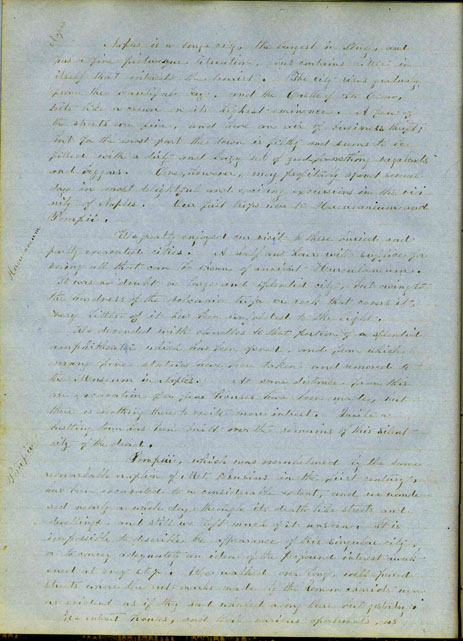Travel
Diary of Mrs. R.P. Eaton:
Europe,
Egypt, and Palestine, ca. 1857

We greatly enjoyed our visit to these buried and partly excavated cities. A half and hour will suffice for seeing all that can be shown of ancient Herculaneum. It was no doubt a large and splendid city, but owing to the harshness of the volcanic rock that covers it, very little of it has been unfolded to the light.
We descended with candles to that portion of a splendid amphitheater which has been opened, and from which many fine statues have been taken and removed to the Museum in Naples. At some distance from this an excavation of a few houses has been made, but there is nothing there to excite more interest. Quite a bustling town has been built over the remains of this silent city of the dead.
Pompeii, which was overwhelmed by the same remarkable eruption of Mt. Vesuvius in the first century, has been excavated to a considerable extent, and we wandered nearly a whole day through its death-like streets and dwellings, and still we left much of it unseen. It is impossible to describe the appearance of this singular city, and to convey adequately an idea of the profound interest awakened at every step! We walked over long, well-formed streets where the rut-marks made by the Roman chariots were as evident as if they had wheeled along there yesterday.
We entered houses, and their various apartments, as